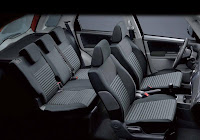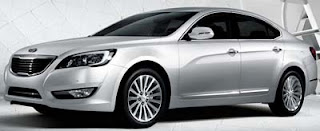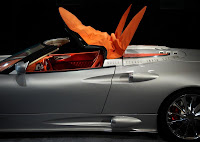Suzuki SX4, 2010







Suzuki SX4 is a distinctive five-door hatchback that blends the characteristics of sporty compacts exemplified by the Swift, with those of lightweight SUVs such as the Grand Vitara, to create an exciting small car alternative.
The resulting 'sport X-over' combines responsive driving dynamics, 4x4 capability, high levels of practicality and styling that suggests a freestyle approach to life.
The UK line-up offers two engine options - one diesel and one petrol. The revised 120PS 1.6 litre VVT petrol engine is available in either SZ3 or SZ4 2WD (front-wheel drive) format or as a 4x4 SZ5 model with selectable/automatic four-wheel drive. The 1.6-litre DDiS will be available in SZ4 trim from April 2010, together with the SZ5 4X4 petrol.
.
Expressive, confident exterior
The Suzuki SX4 is styled to look good in any setting. Fusing the dynamism of SUVs with the elegance of passenger cars gives poise and presence beyond the model's compact size. The 2010 model features a redesigned front bumper and grill together with new design 16-inch alloy wheels for SZ4 and SZ5 models. A low, rising waistline and large, triangular glazing forward of the front doors give the vehicle a strong, sporty wedge shape expressing dynamic performance, while the pronounced wheelarches and wide front and rear track broadcast stability and good traction. The design suggests a potential that is not found in conventional hatchbacks and that is pure Suzuki in nature: exciting, multi-dimensional and visually appealing.
Bold and refined interior
The "X-over" design continues inside the vehicle, with curving wraparound forms and trim materials and fabrics that have high visual and tactile quality. Circular motifs and a flowing centre panel - also used to critical acclaim in other Suzuki models - express the car's dynamic performance and add to its active lifestyle appeal.
The two-tone interior is predominantly black, highlighted with metallic-coloured accents and wedge-shaped motifs, for a look that is both bold and refined. The instrument panel's ergonomic design ensures the key meters and controls are intuitive and simple to use. A new style, LED back lit three-dial cluster provides important information at a glance and neatly echoes the metallic, circular motifs of the side air outlets and other controls. Important driver information on average and instantaneous fuel consumption as well as driving fuel range and outside temperature have now been relocated from the top centre of the dashboard to directly ahead of the driver in the instrument cluster.
The lower centre dashboard panel has also been revised for the 2010 model and incorporates a new display; housing the audio, air conditioning and other controls. On SZ4 and SZ5 models the large dials of the fully automatic air conditioning have ring lights, which make them easier to see and use, while adding to the overall refined quality. Steering wheel audio controls are now illuminated for added convenience.
Balance of form and function
The Suzuki SX4 comfortably accommodates up to five people and their luggage needs, while retaining a sleek and stylish look. The 4WD models have exterior length-width-height dimensions of 4,150mm x 1,755mm x 1,620mm (2WD models:1,605mm) These efficient proportions and a minimum turning circle of 10.6 metres make Suzuki SX4 easy to navigate around narrow urban streets and easier to park in spaces that would be out-of-bounds to large SUVs.
The spacious interior offers plenty of leg and shoulder room, even for rear seat passengers. Space is not the only factor in ensuring plenty of on-board comfort: the shape and position of the seats are designed to support a natural posture, a key factor in comfortable long-distance travel. Additionally, ideal seat heights, large door openings, and high ground clearance make access easy for all on board. The rear seats are set slightly higher, which means even those in the back get a good all-round view.
The rear seats divide 60:40, which means long items can be carried while still seating one or two rear passengers. They can also be tumbled forward to create an almost fully flat load floor, increasing boot capacity from 270 to 625 litres (VDA measurement).
Specification
Suzuki SX4 is well equipped as standard with the SZ3 model offering six airbags; remote central locking with deadlocks, air conditioning, MP3 / WMA compatible CD tuner with eight speakers, four electric windows, driver information display and illuminated steering wheel mounted audio controls.
The SZ4 model adds fog lamps; 16-inch alloy wheels, side body protection and heated door mirrors. Petrol engine SZ4 models have an even higher specification with keyless entry and start; dashboard centre speaker and automatic air conditioning.
On sale in April, the top of the range SZ5 model adds i-AWD (intelligent All Wheel Drive), MP3 / WMA compatible six CD changer and rear privacy glass.
Pure driving exhilaration
The Suzuki SX4 was engineered from the outset to offer all-wheel drive capability, yet still deliver sharp, dynamic performance. The inherent qualities of sporty hatchbacks are evident in the car's responsiveness and comfortable long-distance travel, while Suzuki's extensive experience in 4WD technology delivers all-wheel traction that is more than adequate for everyday situations.
The revised 1.6-litre petrol engine features drive by wire throttle control, a new variable valve timing and variable intake system for enhanced driveability and response. It powers the 2WD models with manual transmission from nought to 62 mph in 10.7 seconds - 11.5 seconds for the 4x4 model. In combined cycle driving, the 2WD manual models return 45.6mpg, a 10 per cent improvement over the previous engine, while the 4x4 is only slightly behind, returning 43.5mpg, a very respectable figure for a petrol-powered 4x4.
Power and torque
The 1.6-litre petrol engine has been improved to comply with Euro 5 emissions with a new cylinder head and block which offer improved cooling performance and improved 'knock' or detonation control limits; the higher power output (120PS vs 107PS) over the previous engine has been achieved by extending the intake and exhaust valve lift with variable valve timing and utilising a variable inlet manifold.
The variable intake system is similar to that used in the Grand Vitara 2.4-litre engine in which rotary valves in the intake manifold change the length of the intake ports according to engine speed. The result is improved intake efficiency throughout the rev range.
The variable intake system adjusts intake port length in three stages, Low, Mid and High engine speeds; thus gaining the maximum potential from the intake manifold. Optimising intake efficiency in this way means the engine delivers higher torque at the right time and subsequently delivers lower emissions across the engine speed range.
The engine also utilises a thin walled exhaust catalyst to also help achieve higher fuel efficiency and lower emissions; this is particularly relevant after start up from cold as the exhaust catalyst is able to reach it's correct operating temperature in less time.
The signature feature of the Suzuki SX4 4x4 is it's i-AWD switchable three-mode all-wheel drive system. An Electric Control Coupling Device allows the driver to select 4WD-Auto, 4WD-Lock, and 2WD modes to suit driving conditions, giving excellent traction on low grip surfaces.
In 4WD-Auto mode in normal driving conditions there is no torque transfer to the rear wheels, so the Suzuki SX4 effectively operates as a front-wheel drive vehicle. As soon as any pronounced front wheel slip is detected, torque is automatically apportioned to the rear wheels to give all-wheel traction and improve vehicle stability.
4WD-Lock mode maintains full traction up to around 40mph, before automatically switching to 4WD-Auto mode for smooth cruising. Selecting 2WD (drive through the front wheels) optimises fuel economy.





























































